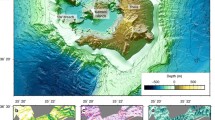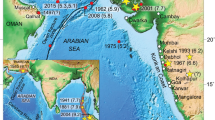Abstract
—Tsunami were generated during the Late Bronze Age (LBA) eruption of the island of Thera, in the southern Aegean Sea, by both caldera collapse, and by the entry of pyroclastic surges/flows and lahars/debris flows into the sea. Tsunami generated by caldera collapse propagated to the west producing deep-sea sedimentary deposits in the eastern Mediterranean Sea known as homogenites; open-ocean wave heights of about 1.9–17 m are estimated. Tsunami generated by the entry of pyroclastic flows/surges and lahars/debris flows into the sea propagated in all directions around the island; wave heights along coastal areas were about 7–12 m as estimated from newly identified tsunami deposits on eastern Thera as well as from pumice deposits found at archaeological sites on northern and eastern Crete.
Similar content being viewed by others
Author information
Authors and Affiliations
Additional information
Received June 4, 1998, revised March 5, 1999, accepted May 18, 1999
Rights and permissions
About this article
Cite this article
McCoy, F., Heiken, G. Tsunami Generated by the Late Bronze Age Eruption of Thera (Santorini), Greece . Pure appl. geophys. 157, 1227–1256 (2000). https://doi.org/10.1007/s000240050024
Issue Date:
DOI: https://doi.org/10.1007/s000240050024




